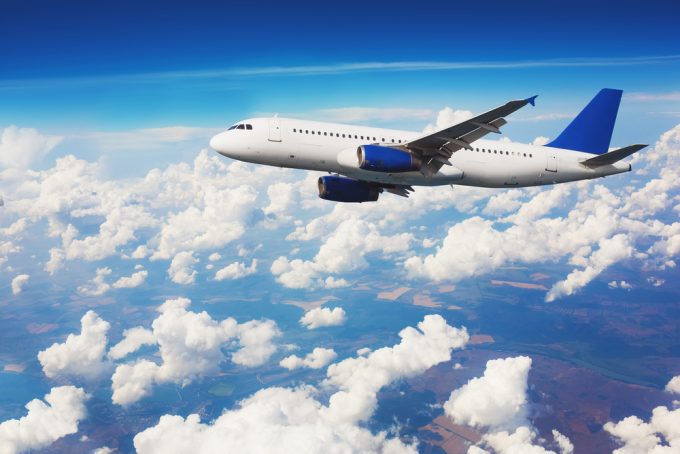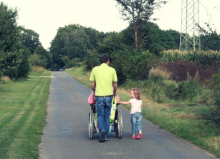Travelling On An Aeroplane with Your Disability

This post has been written by Chris Cammiss, Disability Trainer & Advisor at Disabled Living. Chris has been a wheelchair user since childhood. After graduating from The University of Manchester, he was a secondary schoolteacher for 28 years. Chris now delivers Disability Awareness training and conducts Access Audits over the UK. He travels widely and has accumulated a lifetime’s experience in this environment. He shares his advice for travelling on an aeroplane with your disability.
Flying has become much easier over the years with international guidelines bringing some sort of consistency to the process. However each country, airport and airline has its own individual variations.

Here is some advice from Chris to those with disabilities who are travelling in the future.
When booking the flights either online or in store, check that your disability is recorded. Also, make sure the precise nature of the help required is noted. It is important to consider possible circumstances.
Can a wheelchair user walk at all? This is necessary for ordering the aisle chair for use on-board. Do you need help around the airport? Can you walk unaided for any distance? Do you need a buggy? Can you see at all? You’re entitled to all sorts of help all round the airport and onto the plane itself.
These questions may seem intrusive but the precise level of help needed is what’s important. Members of staff are usually trained to be sensitive here.
When checking in, make sure this information has been noted. At this point check-in staff should send a message through to the assistance point, making your arrival known. It’s useful at this point to go to the assistance point yourself to double-check. Check-in staff often ring the assistance point but if the phone is engaged they may forget to ring later or may be too busy, so the assistance team could think that you haven’t turned up.
At check-in, you can get a travel tag for your wheelchair, walking frame etc if it is to be loaded aboard to make sure it doesn’t get mixed up with the airport’s own equipment. This is not part of your baggage weight allowance.
I don’t personally find it helpful to pre-book seats. Different airlines have different policies on placing disabled travellers in aisle seats, non-aisle seats, seating at a bulkhead, avoiding bulkheads and so on so I leave it to them.
If you are to transfer from an aisle chair check if the seat arm will lift to aid smooth transfer. Usually they do but not always. Each aircraft is different internally.
There will always be an aisle chair available to get you to your seat in the aircraft if you need it. However, it may be the property of the airport therefore; there may not be an aisle chair on the plane in flight although this is best practice. Check, especially for long flights. Consider urine bottles or similar to use at your seat. You may also wish to consider using your wheelchair cushion to sit on for extra comfort on long flights.
All this may seem fairly obvious but I was once helped onto a 10 hour flight to Cuba to be told after take-off that the plane was a double decker, the toilet was on the other floor to me and they didn’t carry an aisle chair – no contingency plan at all.
En route to New Zealand I asked for the aisle chair and appropriate assistance to then be asked, “What? You can’t walk at all?” as if it was my fault that I was putting the staff to so much trouble. I mentioned this to the Head Steward who saw unemployment staring him in the face and was deluged for the rest of the flight with every expensive gift they could think of.
Assistance staff will be trained, but this could have been by watching a 20 min DVD. You will encounter a range of people – many women as this is seen as a caring role and men close to retirement as the role is seen as less physical than other roles, so you may not be helped by the big strong tough guy who would make the whole process easier – far from it.
You may also find yourself transferring in a space with no support, limited help, but lots of concerned onlookers and so on. Your companion may find themselves overwhelmed – carrying their own luggage, yours as well, maybe a cushion or similar, passports and boarding passes. They become invisible as you receive all the help.
Once on board you should be on the Steward’s list so staff should make themselves known to you, asking what they can do.
Knowing how roughly luggage can be treated in loading/unloading and how tricky turbulence can be regular disabled travellers will often not take their best/most expensive wheelchair or other equipment with them on planes. It’s hard to give statistics as people often won’t claim damages but I’ve had two bad breakages of my wheelchair in the last ten years – one wrecked the footplate, and the other twisted the frame.
Each could have compromised the holiday. Luckily we were able to improvise in each case. You could check coverage in your travel insurance if you are concerned.
Equipment in the hold should be delivered to you at the plane entrance as you get off if that’s what you require, rather than at baggage retrieval, as I once experienced.
You may have to wait to be helped off a plane. If staff have several disabled passengers to help or several flights have arrived close together or the terminal is huge, there could be a problem. But it is a legal requirement that airline staff can’t all leave the plane until all passengers are off so you’ll always have someone to talk to.
If all else fails do what they do in Peru. On take-off they cross themselves and after a successful landing they burst into applause. I hope this helps and happy flying!
Would you like to share your experience of travelling on an aeroplane with your disability? Get in touch with us via email: info@disabledliving.co.uk or call us on 0161 214 4590.







